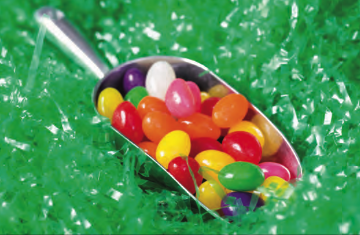By Trish Rudder, The Morgan Messenger
BERKELEY SPRINGS, W.Va. — Even though the jelly bean has been around since the 1800s, it became associated with the Easter holiday during the 1930s, and was most likely due to its egg-like shape. According to Bethany Moncel of Spruce Eats, “jelly beans remain one of the most common Easter candies today.”
Jelly beans are hard-shelled candies with a chewy center and come in more than 50 flavors. The most popular flavor is buttered popcorn, followed by black licorice and cinnamon, according to flavor surveyors.
While jelly beans originated in America, they are now available in more than 80 countries around the globe, including Germany, Thailand, and Qatar.
Jelly beans are thought to be a hybrid of two candies — Turkish delights, and Jordan almonds, both of which date back hundreds of years. Turkish delights are a sweet, chewy candy that has a powdery, sugar coating. Jordan almonds are almonds that are simply coated in a crunchy sugar shell. Combine the chewy center of Turkish delight with the crunchy coating of a Jordan almond and you have something close to what we now know as a jelly bean.
The first known reference to jelly beans was in the late 1800s when William Schrafft, a Boston confectioner, encouraged Americans to send jelly beans to soldiers fighting in the Civil War. By the early 1900s, jelly beans were a common penny candy enjoyed by children and adults alike.
Read more: https://www.morganmessenger.com/2024/03/26/how-did-the-jelly-bean-get-into-the-easter-basket/





